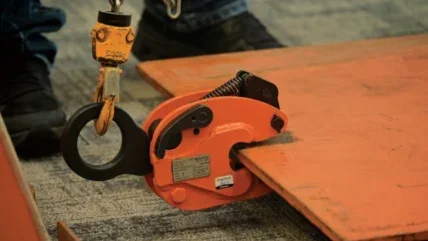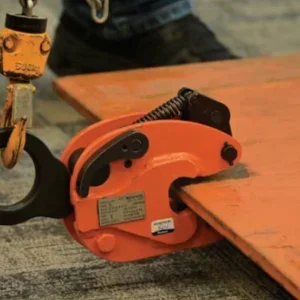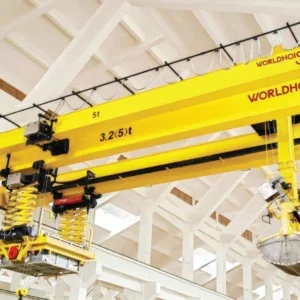
In the last column, we covered removing lifting clamps from service. Here, we go into more detail about the concept of rebuilding clamps and a manufacturer’s wider role in after-sale support.
As we explored previously, a single manufacturer might make 200 types of clamps. That’s a lot of clamps and a lot of scope for wear and tear, which is evident in worn down cams and cam jaws for gripping clamps, excess play in pins, damage to springs and pivoting jaws, and cams not moving freely. It means that these products are frequently removed from service and marked for further inspection, at which point it is hugely advantageous if clamps can be rebuilt onsite or returned to the manufacturer for a second opinion. Damage to welded bodies requires replacement, but most other issues can be rebuilt. This isn’t always possible with every clamp on the market, and it can lead to costly and unnecessary replacements. Some lifting clamp parts, for example, are forged or welded, or put together in a way that they can’t be taken apart.
Clamps should be viewed as safety products – they keep people safe, after all. Diligent users want to have the control to maintain those safety parameters themselves. In turn, reputable manufacturers understand that users want the ability to maintain this important piece of equipment in the field – in other words, all parties want to avoid throwing clamps away and buying new ones. Renfroe supports its lifting clamps with rebuild kits and can even supply a single cam jaw if that will see the item safely returned to service.
In order for rebuild to be an option, the right rebuild kit must be sourced at the time of purchase and kept in a place where it is easily found. Different kits have different parts because the clamps themselves are not the same. Even within a single model, kits will vary by size and clamp capacity. All rebuild kits for one model will have the same pieces, but a separate kit will be available for various tonnage capacities. A rebuild kit should include all required hardware to install components, such as a shackle pin, gripping cam, cam pin, swivel jaw, lock spring, shackle pin bushing, cam stop pin and fasteners.
Good as new
Importantly, rebuild kits are not designed for all circumstances. Even high-quality clamps have a service life. Also, if clamps are not properly maintained, overloaded and/or are required to perform in harsh operating environments, say, in extreme temperatures, this will have an impact on their life cycle. Further, clamps are sometimes stored and handled without due care and attention.
A sign that damage might have gone beyond the point of rebuild is when misuse leads to damage to the main structure of the clamp. Typically, all the repairable and replaceable parts are black in colour on Renfroe clamps. One quick way to tell a clamp has been overloaded and should be taken out of service is when the bolt holding the body together has loosened – this would indicate it has been stretched during overload.
There are other times when users don’t have the bandwidth or the right staff to inspect or rebuild a clamp. That’s when the manufacturer should be available to support them. Their experts will evaluate a clamp and make recommendations, while quickly providing quotes and timelines for getting the clamp back to the point of use in working condition.
A manufacturer should be able to return a clamp fully rebuilt, repainted and with a new certificate – or offer a full explanation as to why that isn’t possible, and replacement is the only option. We often receive clamps along with a simple question from the user, “Can this be rebuilt or not?”, and it’s not a protocol that we discourage. If a clamp appears to be misused, our primary concern is making sure the customer is properly trained to safely use the clamp and advise if the application is correct. In our supply chain, we work initially with the dealer and then, if needed, directly with the end user.
Training is part of the same rebuild or replace discussion. The breadth of training available is another good barometer by which to measure the integrity of a lifting clamp manufacturer. In fact, knowing when to rebuild or replace isn’t simply a case of looking at a defect – it’s about knowing how a clamp is built and how it works.
What does your lifting clamp rebuild, replace, training trifecta look like?






